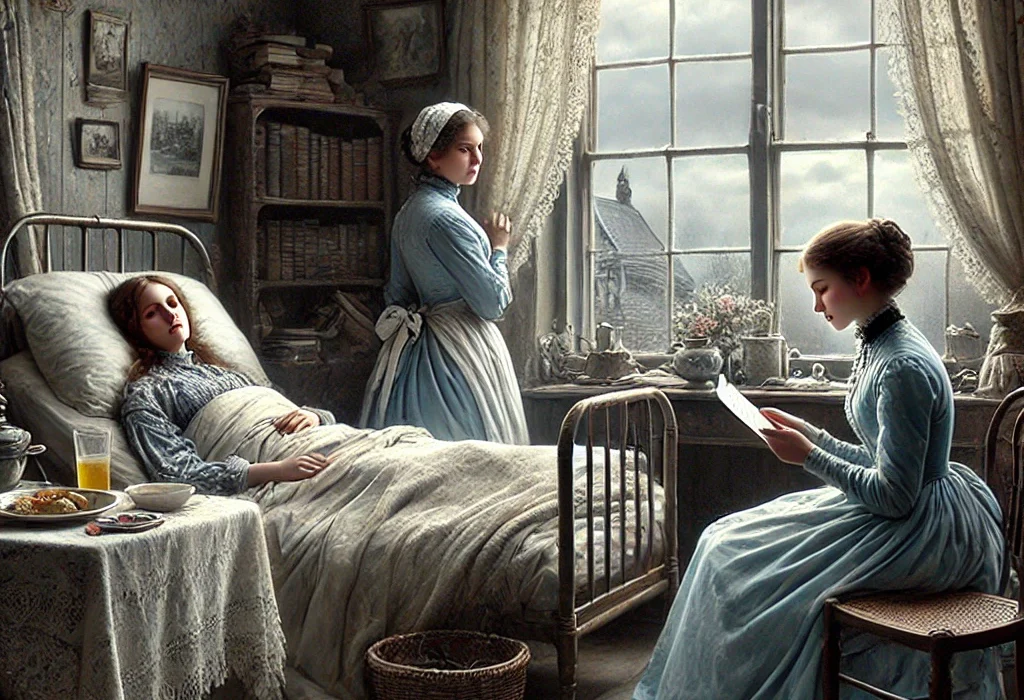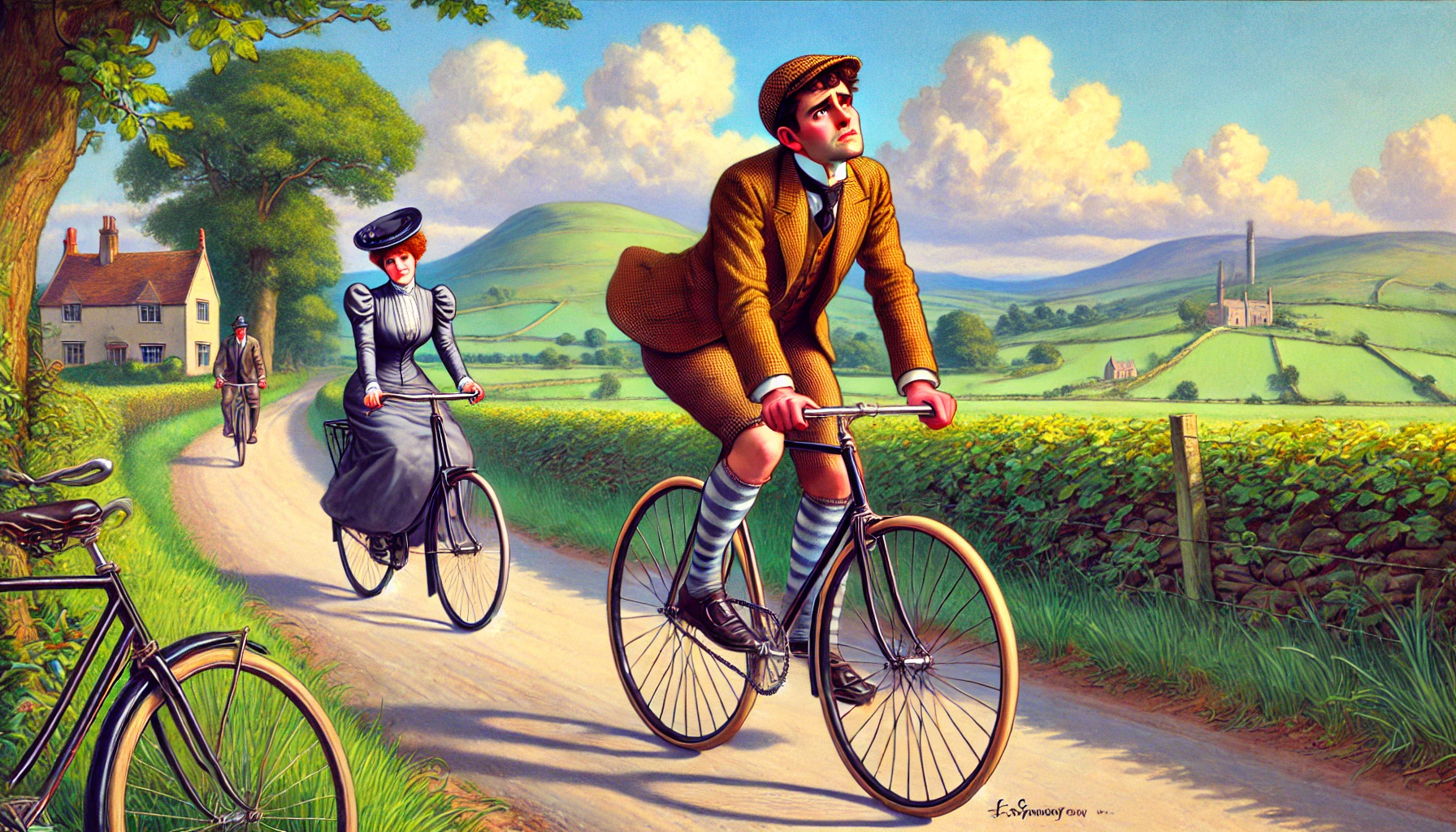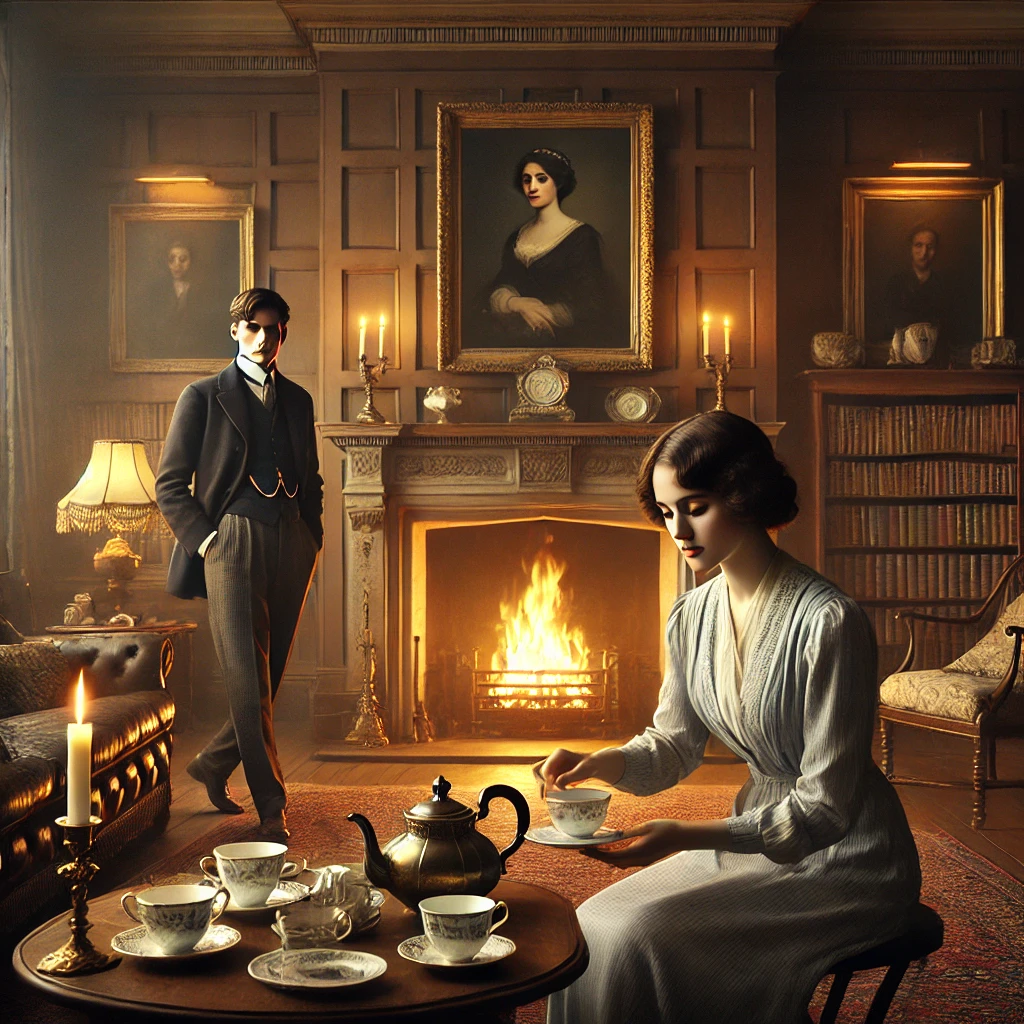The Odd Women is a novel by George Gissing, first published in 1893. Set in the late Victorian era, it delves into the social and economic challenges faced by women in a society where traditional gender roles are deeply entrenched. The title refers to the surplus of women in England at the time, outnumbering men and thus left “odd” or unmarried. The novel explores themes of women’s independence, social reform, marriage, and the struggle for gender equality, placing Gissing among the key literary voices engaging with feminist ideas of the time.
Plot Summary
In the year 1872, Dr. Madden, a kindly but impractical man, lives with his six daughters in Clevedon. Though dedicated to their education and well-being, he has failed to secure their financial future. The daughters—Alice, Virginia, Gertrude, Isabel, Martha, and Monica—live sheltered lives under his care, with little thought of having to work for a living. Dr. Madden dreams of a world where women need not trouble themselves with sordid financial concerns. However, when Dr. Madden dies unexpectedly in an accident, the family is left in financial ruin, unprepared for the harsh reality of a life without his support.
Time passes, and by 1887, the family has fragmented. The older Madden sisters, Alice and Virginia, are worn down by years of poverty and hard work. They live together in a cramped London lodging, relying on the small income left from their father’s meager estate. Both are employed in poorly paid and degrading jobs: Alice as a nursery governess, and Virginia as a companion to various elderly women. Their hopes for a better future have long since faded, but they still harbor dreams for their youngest sister, Monica, whom they believe to be their one chance at escaping misery.
Monica, meanwhile, works as a shop assistant at a draper’s shop in Walworth Road. Though her beauty and youth set her apart from her older sisters, her life is no less challenging. The work is exhausting, the hours long, and the constant pressure from her employer oppressive. Monica’s dreams of a better life become entangled with Edmund Widdowson, an older man who falls in love with her and proposes marriage. Desperate to escape the drudgery of her job and the poverty of her sisters, Monica accepts Widdowson’s offer, despite having little affection for him.
Widdowson, though well-meaning, is possessive and controlling. His old-fashioned views on marriage lead him to treat Monica as his property, expecting her to devote herself entirely to him. His jealousy and insecurity soon make life unbearable for Monica, who begins to feel trapped in the marriage. She tries to assert her independence by spending time with her sisters and seeking friendships outside the confines of her domestic life, but Widdowson’s overbearing nature makes it difficult for her to breathe freely. Tension builds between the couple, and Monica’s discontent grows.
At the same time, Rhoda Nunn, an old acquaintance of the Madden sisters, re-enters their lives. Rhoda, fiercely independent and unmarried, has devoted herself to the cause of women’s emancipation. She works alongside Miss Barfoot, a progressive woman who runs a school dedicated to training young women for professional work, equipping them with skills such as typing and bookkeeping. Together, they are determined to give women the means to support themselves, freeing them from the necessity of marriage for survival.
Rhoda’s relationship with Monica and her sisters is complex. Though she admires Monica’s spirit and desires to help her, she also disapproves of her decision to marry Widdowson. To Rhoda, marriage is a trap, a surrender of a woman’s autonomy. Rhoda’s own life is a testament to her belief in independence, and she struggles to reconcile her feelings for Monica with her ideals. When Monica’s marriage begins to unravel, Rhoda is both sympathetic and vindicated.
Rhoda’s world is further complicated by the arrival of Everard Barfoot, a cousin of Miss Barfoot, who has returned to England after several years abroad. Everard is drawn to Rhoda’s strength and intellect, and he begins to pursue her, despite her openly expressed disdain for romantic entanglements. Rhoda is suspicious of Everard’s intentions, believing that he, like most men, seeks to dominate women. However, as they spend more time together, she begins to question her own beliefs about love and companionship. Everard challenges Rhoda in ways she had not anticipated, and their relationship becomes a battle of wills, testing Rhoda’s commitment to her ideals.
Meanwhile, Monica’s situation reaches a breaking point. Isolated and oppressed in her marriage, she begins to see another man, Bevis, whose kindness and understanding offer her a glimpse of the freedom and happiness she longs for. Widdowson’s suspicions drive him into a frenzy of jealousy, and the marriage becomes a battleground of mistrust and emotional abuse. Monica’s health deteriorates under the strain, and she faces a difficult choice: to remain in her marriage or seek a life of her own, regardless of the consequences.
Monica’s fate takes a tragic turn when she becomes pregnant. The discovery worsens her already fragile condition, and the pressure of her unhappy marriage weighs heavily on her. Despite her growing affection for Bevis, she knows that leaving Widdowson would mean social disgrace and financial ruin. She becomes increasingly desperate, caught between her desire for independence and the cruel reality of her situation.
In the end, Monica’s strength fails her. Her health collapses, and she dies, leaving Widdowson shattered by guilt and grief. Rhoda, devastated by Monica’s fate, is more determined than ever to fight for women’s independence, though she continues to grapple with her feelings for Everard. The novel closes with the sense that the struggle for women’s rights and personal freedom will continue, with Rhoda and Miss Barfoot at the forefront, despite the personal sacrifices such a life demands.
Through the lives of the Madden sisters and their companions, the harsh realities of women’s lives in Victorian England are laid bare. The novel portrays a society in which marriage often serves as a prison, where women are denied the opportunity to fulfill their potential, and where the fight for equality is fraught with personal loss. Yet it also offers hope, in the form of women like Rhoda and Miss Barfoot, who refuse to accept the limitations imposed upon them and work tirelessly to create a better future for others.
Main Characters
Rhoda Nunn: A fiercely independent woman and a vocal advocate for women’s rights. She runs a school that trains women for professional work, reflecting her belief in women’s self-sufficiency. Throughout the novel, Rhoda grapples with her staunch ideals and her personal emotions, especially in relation to her suitor, Everard Barfoot.
Monica Madden: The youngest of the Madden sisters, Monica embodies the conflict between traditional female roles and the desire for independence. She starts off working in a dreary shop but seeks more from life, entering a troubled marriage with Edmund Widdowson, which reflects the oppressive expectations placed on women.
Everard Barfoot: A distant relative of Miss Barfoot, Everard is a complex character who embodies both progressive and traditional masculine attitudes. His intellectual curiosity leads him into a romantic entanglement with Rhoda, challenging her principles about love and independence.
Alice and Virginia Madden: Two of Monica’s older sisters, they lead lonely, constrained lives after the death of their father. Both Alice and Virginia reflect the harsh realities of spinsterhood in Victorian society, battling poverty and the lack of opportunities for unmarried women.
Miss Mary Barfoot: Rhoda’s friend and mentor, Miss Barfoot is another advocate for women’s professional independence. She runs the school with Rhoda and represents the more moderate feminist view, supporting both women’s education and the possibility of marriage.
Theme
Women’s Independence: One of the core themes is the struggle for women’s economic and social independence. Gissing explores the difficulties women face in finding meaningful employment and autonomy in a world dominated by male privilege.
Marriage and Gender Roles: The novel offers a critical examination of marriage, particularly through Monica’s disastrous union with Widdowson. Marriage, in this context, often serves as a trap for women, curbing their freedom and aspirations.
Social Reform and Feminism: Through characters like Rhoda and Miss Barfoot, Gissing engages with early feminist ideas, advocating for education, professional opportunities, and financial independence for women. However, the novel is also aware of the complexities and personal sacrifices that accompany these goals.
Loneliness and Isolation: The Madden sisters, especially Alice and Virginia, represent the emotional and social isolation of women who do not marry. The novel touches on the bleak prospects for ‘odd women’—those who fall outside the traditional path of marriage and domesticity.
Conflict between Idealism and Practicality: Rhoda’s ideological rigidity contrasts with the more pragmatic approaches of Miss Barfoot and Monica. The tension between feminist ideals and the harsh realities of society is a recurring motif in the narrative.
Writing Style and Tone
George Gissing’s writing in The Odd Women is marked by its realism, typical of his broader body of work. He employs a sober, reflective tone that underscores the bleak realities of Victorian life, especially for women. The narrative is filled with rich social commentary, with Gissing often pausing to explore the philosophical and moral dimensions of his characters’ choices. His prose is elegant but direct, avoiding overly sentimental or romanticized depictions of his characters’ lives.
Gissing’s style is also characterized by a detailed exploration of his characters’ inner lives, particularly the Madden sisters and Rhoda Nunn. Through subtle dialogue and nuanced description, he captures the emotional and psychological struggles of women confined by societal expectations. The tone often shifts between empathetic and critical, as Gissing portrays both the strength and the vulnerability of his female characters. The mood is frequently somber, reflecting the limited options available to women in a patriarchal society, yet there are moments of quiet hope for social progress and individual empowerment.
We hope this summary has sparked your interest and would appreciate you following Celsius 233 on social media:
There’s a treasure trove of other fascinating book summaries waiting for you. Check out our collection of stories that inspire, thrill, and provoke thought, just like this one by checking out the Book Shelf or the Library
Remember, while our summaries capture the essence, they can never replace the full experience of reading the book. If this summary intrigued you, consider diving into the complete story – buy the book and immerse yourself in the author’s original work.
If you want to request a book summary, click here.
When Saurabh is not working/watching football/reading books/traveling, you can reach him via Twitter/X, LinkedIn, or Threads
Restart reading!








